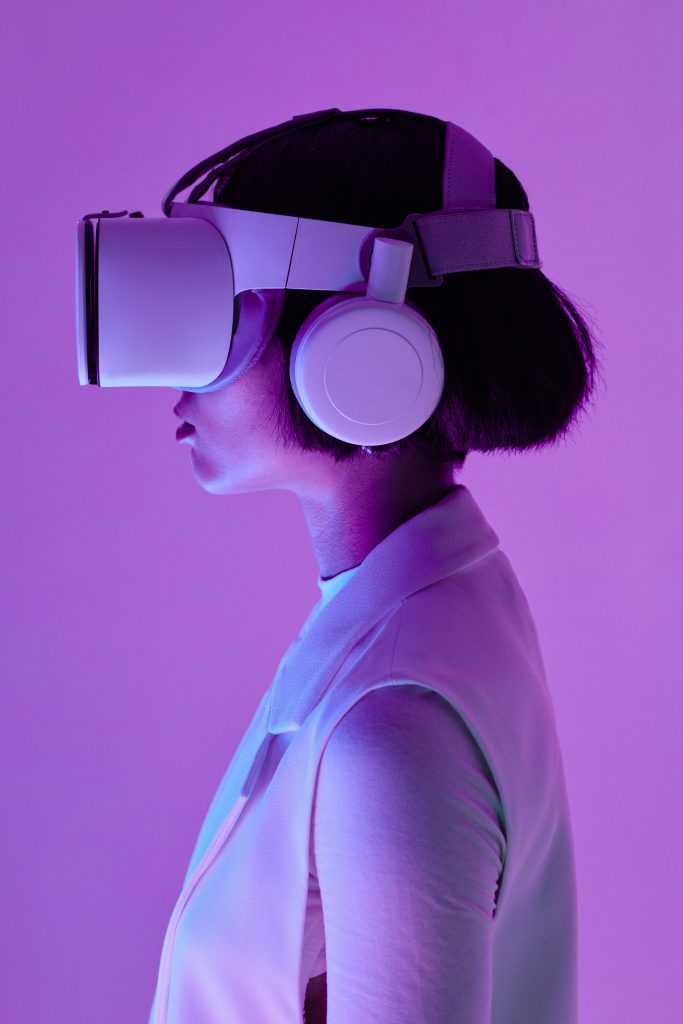
Artificial Intelligence is increasingly solidifying its place in the world that we live in, from the widespread use of ChatGPT to the AI-generated songs and deepfakes littering our social media. Huge changes have been made across all industries and the fashion industry is no exception to this! The prominent role AI will play in the fashion industry calls for an assessment of the benefits it provides as well as the risks it poses. Should AI in fashion be embraced or opposed?
AI has really taken the fashion industry by storm. In the Web Summit 2023, AI in fashion was presented as a key topic. A noticeable example of this is the growing use of AI generated models by fashion brands. Levi’s created commotion when it announced its partnership with Lalaland.ai to experiment with AI-generated models. For the first time ever, Vogue included AI models in its 2023 Singapore Issue. Balmain has introduced a “New Virtual Army” campaign, centred on virtual models. They have also decided to use AI to power new virtual fit solutions so that customers can create avatars of themselves and try on different outfits. The AI-assisted fashion app ACloset allows customers to view a digital copy of their closet, enabling them to mix and match outfits (think Cher’s closet in Clueless). Videos of Adobe’s Project Primrose, which used generative AI to create an interactive dress, have gone viral, showing the potential this technology has for designers. This highlights how AI is seeping into many sections of the fashion industry.
The use of AI could cause a positive transformation to the fashion industry. It’s always frustrating to order clothes and then find out that they don’t fit when they finally arrive. However, with virtual fitting-rooms allowing customers to see how clothes will look on, this can be prevented. Customers can have an easier and more personalised shopping experience.
Importantly, AI is great for sustainability. This is because improved sizing and enhanced customer experience means less waste and pollution caused by shipping. A virtual closet can reduce overconsumption as it helps people to utilise the clothes that they own. Also, AI assists brands to track future trends and assess the sustainability of supply chains so that unnecessary waste is reduced. AI-based design tech has improved efficiency and can help in the reduction of waste in the design process. In the 2023 Vogue Business study, in partnership with Google, of AI in fashion, it was found that “87% of activists are willing to spend between 5 and 50 percent more on sustainable fabrics designed with AI”. This is a major incentive for brands to focus on sustainability. At a time where fast fashion is still a major problem, AI could be just what the fashion industry needs!
However, as with the role of AI in any industry, there are serious ethical concerns. The use of AI models is the most problematic as it adversely affects the livelihoods of real-life models as they provide brands with a less costly alternative. The idea of all images of people that we see on social media, beauty magazines and fashion campaigns being AI-generated is unsettling! When Levi’s used AI-models, they stated that this was to increase inclusivity. However, this raises the question of why brands would rather use AI than pay models from marginalised groups. Why is a fake conception of inclusivity preferred over genuine inclusion of under-represented groups? The use of the famous, South-African, digital model Shudu Gram by popular brands has been met by strong criticisms and accusations of cultural appropriation due to her creator being a white man as well as opportunities being taken away from black models.There are also legal concerns about images of models being used without their permission.
A central issue is what does AI mean for creativity? Though AI has been presented as a useful tool, it could also lead to the homogenization of fashion. For example, though the Adobe Primrose dress is impressive, even more so is the work by designers, such as Iris van Herpen and Hussein Chalayan, where the clothes have been carefully crafted to change form. AI has the potential to stunt innovation and remove authenticity.
AI is not all good, but it is not all bad either. It sits precariously at a place between friend or foe. There is great potential for AI to positively impact the fashion industry through improving customer experience and increasing sustainability. However, it is important that a balance is maintained, and that AI is not allowed to crush creativity and have a damaging impact on the human workforce in fashion.
Featured Image: Michelangelo Buonarroti on Pexels
